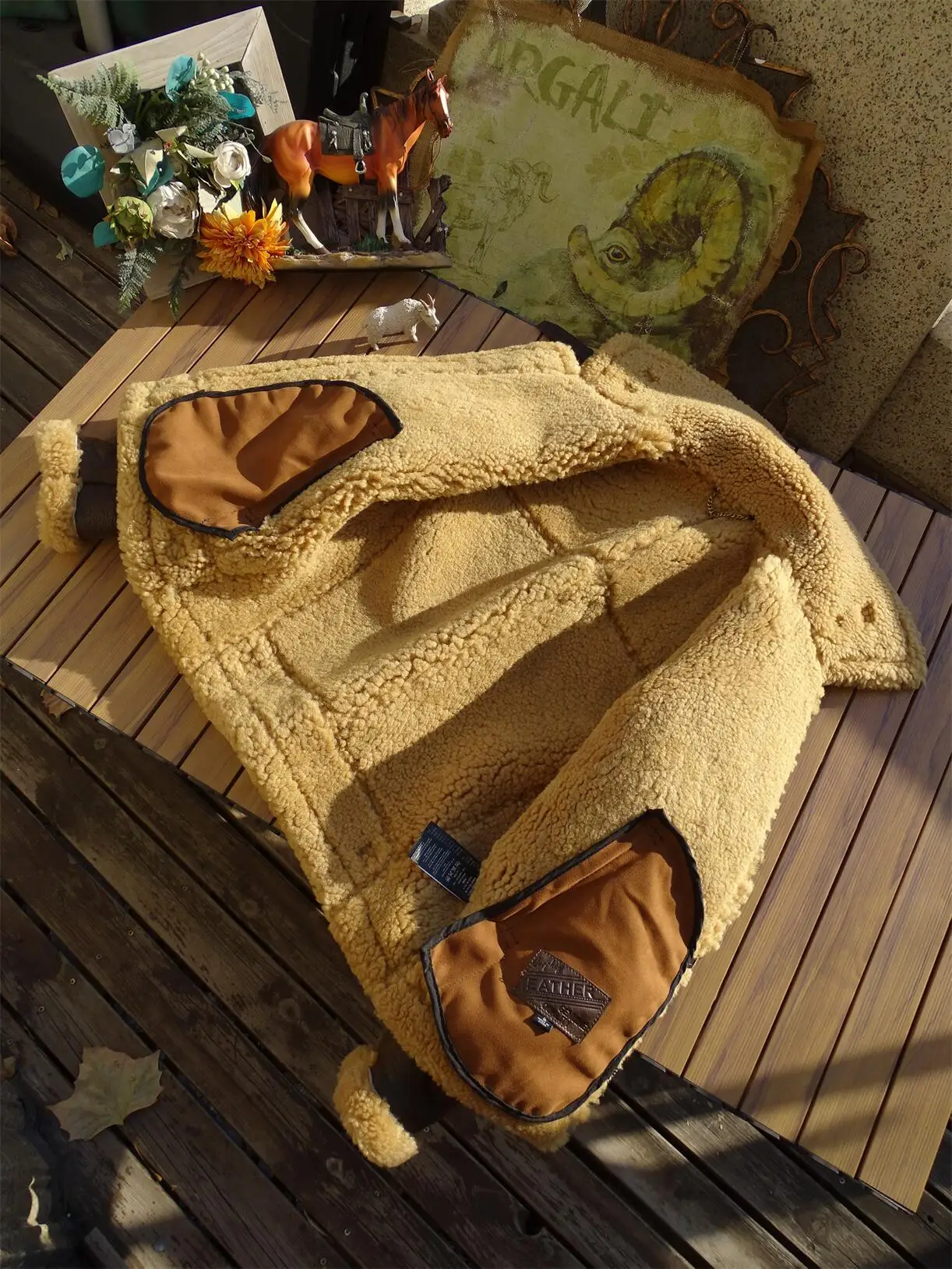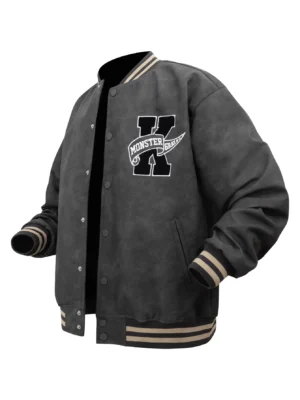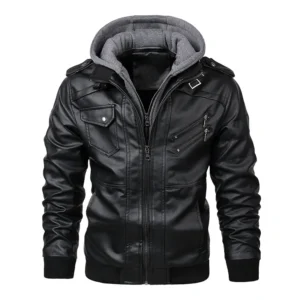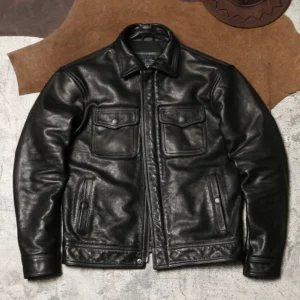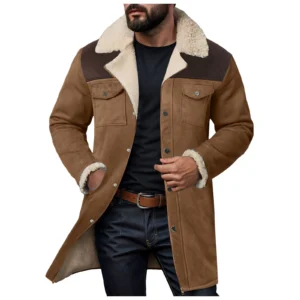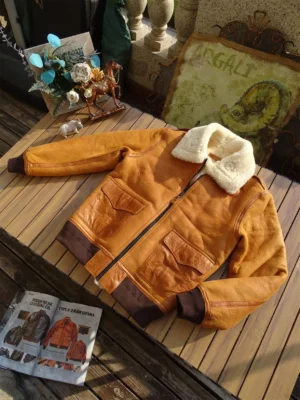The Birth of Aviator Shearling Jackets: Early Aviation Challenges
The aviator shearling jacket is defined by its distinctive combination of rugged leather exterior and natural sheepskin lining. This pairing wasn’t merely a style choice but a vital solution to the extreme challenges faced by early pilots.
In the dawn of aviation, pilots navigated the skies in open-cockpit aircraft that offered virtually no protection from the elements. As these brave aviators ascended to higher altitudes, they encountered brutal conditions that ordinary clothing simply couldn’t withstand:
- Temperatures at 20,000 feet could plummet to -40°F (-40°C)
- Wind chill factors increased the severity exponentially
- Pilots required mobility while maintaining body heat
- Flight durations grew longer, demanding sustained protection
The natural properties of sheepskin made it uniquely suited for these harsh conditions. The material provides exceptional insulation while remaining relatively lightweight. Perhaps most critically, shearling’s wool fibers can absorb up to 30% of their weight in moisture without feeling wet, keeping pilots dry even during extended flights.
Early pilots often created makeshift solutions before standardized classic shearling jackets emerged. They wrapped themselves in multiple layers, scarves, and improvised leather garments lined with whatever insulating materials were available. The distinction between sheepskin and shearling wasn’t always clear in these early days, though true shearling (where the wool remains attached to the hide during tanning) would eventually become the gold standard for aviation outerwear.
These primitive solutions would soon evolve into something far more sophisticated as military aviation took flight during the First World War.
World War I: Military Innovation and the First Official Models
The outbreak of World War I in 1914 transformed aviation from a daring hobby into a critical military asset. As aircraft technology advanced rapidly, so did the need for specialized equipment to protect pilots in increasingly demanding missions.
The Royal Flying Corps (RFC) in Britain was among the first to recognize the need for standardized flight gear. Early RFC pilots frequently flew reconnaissance missions at altitudes above 15,000 feet in open cockpits, where temperatures regularly reached well below freezing. These conditions demanded innovation.
Leslie Irvin, an American parachutist and aviation clothing designer, developed what would become the “Irvin” jacket—a heavy sheepskin garment featuring:
- An oversized collar that could be fully fastened when turned up
- Broad panels that provided maximum torso coverage
- Snug-fitting cuffs and waistband to prevent cold air infiltration
- Sturdy exterior leather that resisted wind and moisture
In America, the Aviation Clothing Board was established in 1917 to develop protective gear for U.S. pilots. Their early designs incorporated many defining elements of classic shearling jackets, including thick sheepskin construction, strategic reinforcement points, and functional closures that could be operated while wearing gloves.
These first official models represented a crucial shift from improvised solutions to engineered garments specifically designed for aviation’s unique challenges. Though still rudimentary compared to later versions, they established the fundamental template that would evolve through subsequent decades.
The Interwar Period: Refinement and Technical Advancements
Between the World Wars (1918-1939), aviation experienced remarkable technological leaps that directly influenced flight gear development. Aircraft could now fly higher, faster, and farther than ever before, requiring corresponding improvements in pilot protection.
During this period:
1924-1927: Zippers began replacing button closures, allowing pilots to quickly secure their jackets with one hand while manipulating controls with the other.
1928-1931: Adjustable straps and buckles were incorporated to enable a more customized fit, reducing bulk while maintaining insulation.
1932-1935: Specialized pocket configurations emerged, designed to hold essential tools and survival equipment while remaining accessible in flight.
The interwar years also saw civilian aviation expand dramatically. Air mail services, barnstormers, and early commercial airlines all contributed to flight jacket evolution as pilots spent longer hours in the cockpit and required gear that balanced protection with comfort.
Famous aviators like Charles Lindbergh and Amelia Earhart brought additional attention to flight gear through their high-profile achievements. Their preferred equipment often influenced both military specifications and public perception of what constituted proper aviation attire.
This period of technical refinement and expanded use laid crucial groundwork for the explosion of development that would come with the next global conflict.
World War II: The B-3 Bomber Jacket and the Golden Age of Shearling
World War II marked the defining era for aviator shearling jackets, with unprecedented aerial warfare creating massive demand for effective cold-weather flight gear. The iconic B-3 bomber jacket emerged as the quintessential high-altitude solution, designed specifically for the unheated bombing aircraft operating in the stratosphere.
The B-3 featured several distinctive elements:
- Extra-thick genuine sheepskin construction (often 1/4 inch or more)
- Oversized collar that could be secured across the face for additional protection
- Leather straps and buckles at the neck for a weather-tight seal
- Heavy-duty front zipper reinforced with a wind flap
- Adjustable leather belting at the waist for a customized fit
- Two large external pockets with flap closures
- Weight of approximately 8-10 pounds (3.6-4.5 kg)
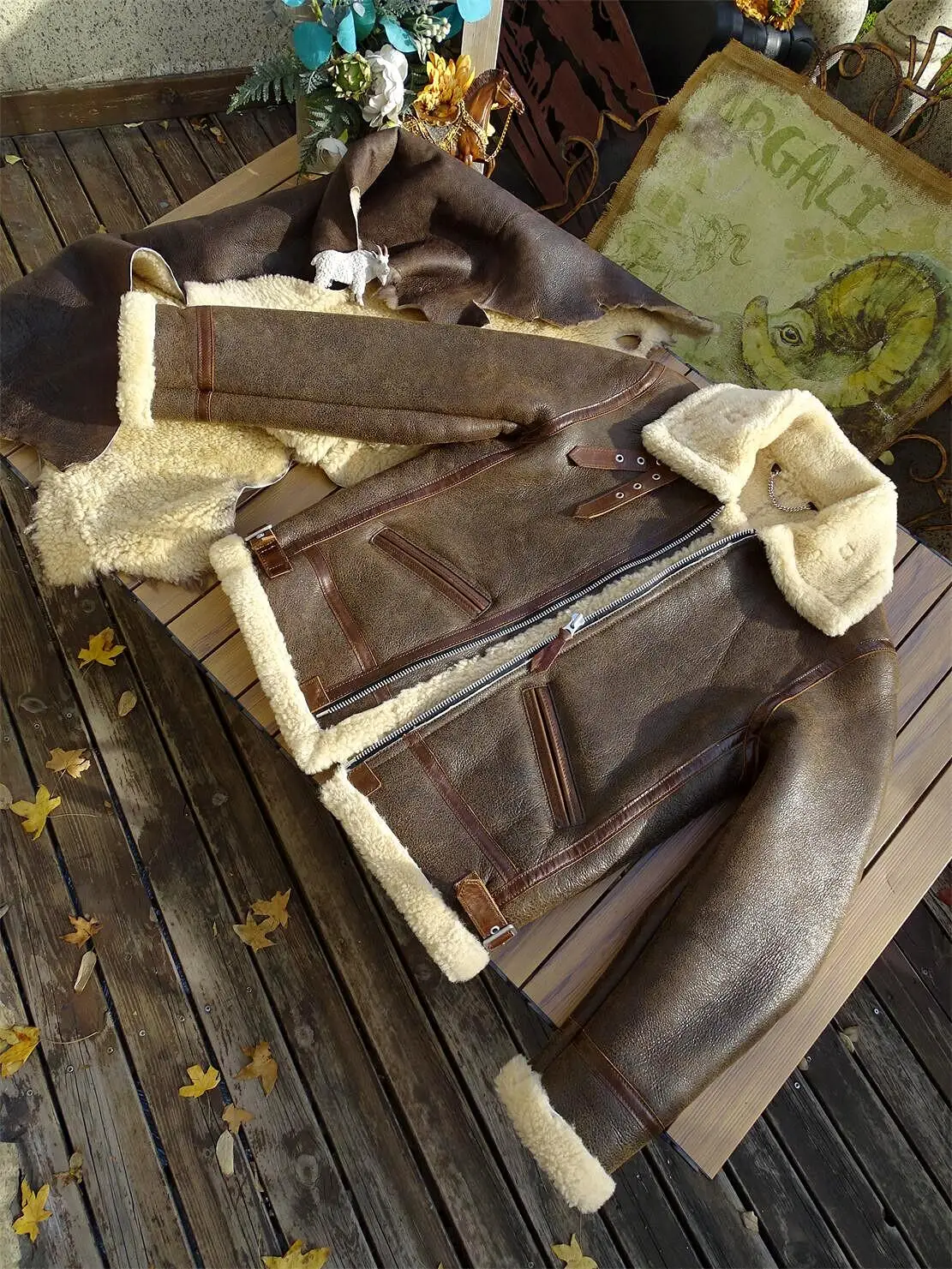
Beyond the B-3, several other important shearling models served specific roles. The D-1 provided a slightly lighter alternative for fighter pilots, while the RAF continued refining its Irvin design for British aircrews. The American ANJ-4 introduced innovations like knit cuffs and waistbands that improved mobility while maintaining thermal protection.
Women also played a crucial role in military aviation during this period. The Women Airforce Service Pilots (WASP) and the British Air Transport Auxiliary (ATA) saw female pilots ferrying aircraft and performing non-combat flight duties, often wearing modified versions of standard-issue flight gear.
The massive production requirements of wartime created challenges in manufacturing. Contracts were awarded to dozens of companies, with millions of men’s shearling coats produced to exacting military specifications. This era represents the perfect marriage of form and function—jackets designed with absolute utility as the priority, unwittingly creating timeless designs that would transcend their military origins.
Post-War Transition: From Military Surplus to Civilian Streets
The end of World War II created a unique circumstance: millions of high-quality shearling jackets suddenly became available as military surplus. These garments—built to withstand the extreme conditions of high-altitude bombing runs—found their way into civilian markets at accessible prices.
Returning veterans, already familiar with the exceptional warmth and durability of these jackets, continued wearing their military-issue gear in civilian life. This practical choice carried symbolic weight as well, serving as a visible connection to their service experience.
By the late 1940s, surplus B-3s and other models could be purchased for as little as $5-$12 (equivalent to roughly $60-$145 today), making them attainable for working-class Americans. The practical appeal of these jackets quickly attracted specific groups:
- Motorcycle enthusiasts valued the windproof protection and rugged durability
- Hot rod culture embraced the masculine aesthetic and mechanical associations
- Outdoor workers in cold climates appreciated the functional warmth
As civilian adoption increased, subtle modifications emerged. Original military designs were often simplified for everyday wear—hardware was lightened, collars reduced in size, and in some cases, the sheepskin lining was thinned for greater mobility in less extreme temperatures.
The timeless quality of shearling coats made them particularly suitable for this transition. Unlike purely technical military equipment that might look out of place in civilian settings, the natural materials and straightforward design of aviator jackets allowed them to seamlessly enter everyday wardrobes while retaining their authentic character.
This organic transition from battlefield to boulevard set the stage for the jacket’s next evolution—from practical garment to cultural icon.
Hollywood and Pop Culture: Cementing an Iconic Status
The cinematic power of Hollywood transformed the aviator shearling jacket from practical garment to cultural symbol beginning in the 1950s. The big screen magnified the jacket’s inherent qualities of rugged individualism and adventure, creating enduring associations that continue today.
Several watershed moments in film cemented the aviator jacket’s iconic status:
- War films featuring heroic bomber crews brought authenticity and historical significance
- Motorcycle and rebel-themed movies of the 1950s linked the jacket to counterculture attitude
- Aviation dramas showcased the garment in its original context while adding glamour and romance
- Action-adventure genres utilized the jacket’s visual weight to enhance character presence
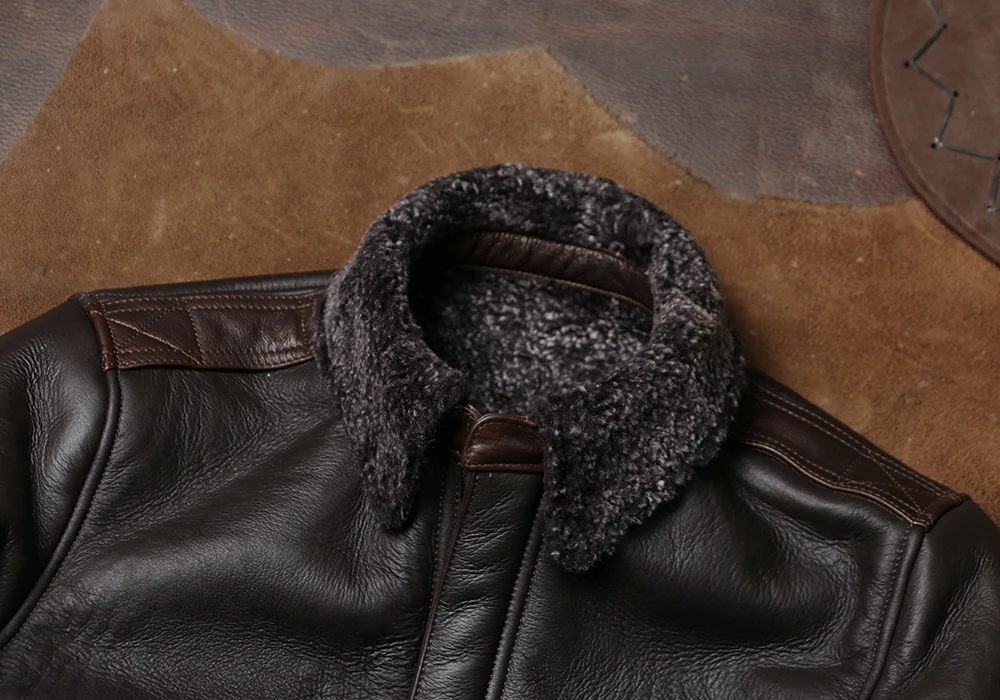
Beyond cinema, music figures played a crucial role in popularizing aviator jackets across different eras. Rock musicians, country singers, and later hip-hop artists all incorporated various styles of flight jackets into their performance personas, each bringing their cultural context to the garment.
What made the aviator jacket particularly suitable for this cultural elevation was its authentic heritage. Unlike fashion items created purely for aesthetic reasons, these jackets carried genuine history—they had protected pilots at 25,000 feet and served in actual combat conditions. This authenticity resonated with audiences and wearers alike.
The fashion industry took note of this cultural significance. By the 1970s and 80s, designers began creating versions that maintained the recognizable silhouette while experimenting with materials, colors, and proportions. Women’s fashion also embraced the style, often playing with the tension between the jacket’s masculine military origins and feminine styling.
Through this cultural journey, the aviator jacket transcended its utilitarian beginnings to become something far more significant—a symbol of American identity, adventure, and timeless cool.
Design Elements and Construction: Anatomy of the Authentic Aviator Shearling Jacket
Understanding the authentic aviator shearling jacket requires familiarity with its key components and construction techniques. The enduring appeal of these garments stems from their purposeful design where every element serves a specific function.
Essential Components:
- Exterior Leather: Typically 1.0-1.4mm full-grain leather, often cowhide or goatskin, chosen for durability and weather resistance
- Shearling Lining: Natural sheepskin with wool intact, providing insulation through millions of wool fibers that trap warm air
- Collar: Oversized and designed to fold up, often featuring straps or buttons to secure when fully closed
- Closure System: Heavy-duty front zipper (historically brass) with storm flap to prevent wind penetration
- Cuffs and Waistband: Snug-fitting to create thermal seals, using either knitted materials or adjustable leather straps
- Hardware: Reinforced stress points with metal fixtures, typically featuring oxidized finishes to prevent reflective glare (originally a military requirement)
- Pockets: Large, accessible patch pockets, sometimes fur-lined for hand warming
Quality construction indicators include tight, uniform stitching with reinforced seams, especially at stress points. Authentic vintage pieces often show hand-stitched elements and slight irregularities that reflect their handcrafted nature, while modern men’s sheepskin coats typically feature more consistent machine stitching.
The manufacturing process for traditional aviator jackets involved significant hand labor, with skilled craftspeople cutting, assembling, and finishing each component. Modern production has automated some of these steps, though premium jackets still require substantial handwork, particularly in shearling preparation and collar construction.
The marriage of these elements creates a garment that balances protection, mobility, and durability—qualities that explain why the fundamental design has remained largely unchanged despite a century of fashion evolution.
Contemporary Fashion: Designer Interpretations and Modern Appeal
Today’s fashion landscape features aviator shearling jackets that honor their historical roots while embracing contemporary aesthetics. High-end designers and mainstream brands alike continue to find inspiration in this classic silhouette, reinterpreting it for modern wardrobes.
Modern designer interpretations have expanded the aviator jacket’s vocabulary in several key directions:
- Material Experimentation: While traditional shearling remains popular, designers now incorporate synthetic alternatives, exotic leathers, and technological fabrics that reference the original while offering new properties.
- Color Evolution: Beyond the traditional brown and black, contemporary versions explore everything from rich burgundy to olive green, and even bold statement colors.
- Silhouette Variations: Modern cuts may feature slimmer profiles, cropped lengths, or oversized styling that plays with proportion while maintaining recognizable aviator elements.
- Luxury Positioning: High-fashion interpretations often elevate the utilitarian jacket through premium materials, hand-finishing techniques, and subtle branding that transforms the military garment into a luxury statement.
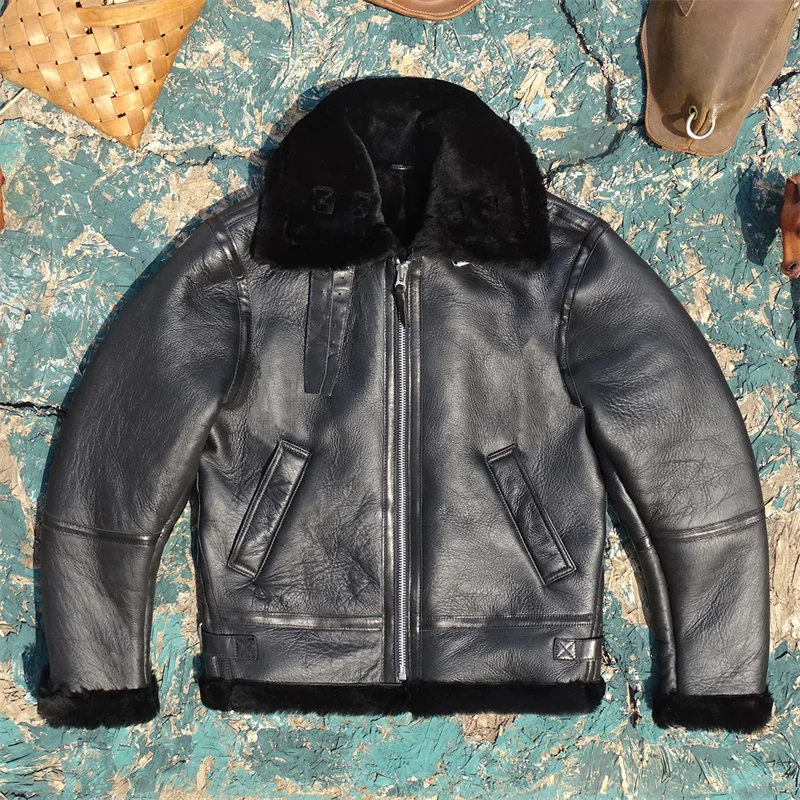
The market for these jackets now spans an impressive range, from heritage brands producing faithful reproductions of military specifications (often priced between $800-2,000) to luxury fashion houses offering reinterpreted versions that can exceed $5,000. More accessible interpretations bring the style to wider audiences at various price points, democratizing this once specialized garment.
What’s particularly remarkable about aviator jackets is their cross-demographic appeal. They manage to remain relevant across age groups, lifestyle categories, and fashion sensibilities. The various top styles of men’s shearling jackets continue to find new audiences while retaining longtime enthusiasts.
This enduring appeal speaks to successful design evolution—maintaining core elements that connect to heritage while adapting to contemporary tastes and needs. The aviator jacket’s journey from military equipment to fashion staple demonstrates how truly functional design can transcend its original purpose to become timeless.
Caring for Shearling: Maintenance and Longevity
A quality aviator shearling jacket represents a significant investment that can last decades with proper care. Understanding how to maintain these natural materials ensures both appearance and functionality remain optimal over years of wear.
Essential Care Guidelines:
- Regular Maintenance:
- Gently brush the wool lining periodically with a soft-bristled brush
- Allow jackets to air out for 24 hours after wearing before storing
Keep away from direct sunlight when not being worn to prevent leather fading
Addressing Moisture:
- If caught in light rain, allow the jacket to dry naturally at room temperature
- Never use direct heat sources like radiators or hair dryers to speed drying
- For wet spots, gently blot (don’t rub) with absorbent towels
Allow complete drying before storing to prevent mildew
Handling Stains:
- Address spills immediately by blotting with clean cloth
- For leather exterior stains, use specialized leather cleaners only
- For shearling interior stains, consult professional cleaners
Never use household detergents or spot removers
Storage Recommendations:
- Store on a padded hanger to maintain shape
- Use breathable garment bags rather than plastic
- Include cedar blocks to deter moths and absorb excess moisture
- Keep in cool, dry closet space away from heating vents
Professional cleaning is recommended for significant soiling or every few years of regular wear. Specialists who understand how to clean men’s leather shearling coats can address both the leather exterior and wool interior without damaging either material.
With proper care, a quality shearling aviator jacket often becomes a lifetime piece that ages beautifully. The leather develops a personal patina while the wool maintains its insulating properties, creating a garment that looks better with age while continuing to perform its essential functions.
Mens Leather Coat, Mens Long Leather Coat
Price range: $225.22 through $235.58 Select options This product has multiple variants. The options may be chosen on the product pageMens Black Leather Coat, Mens Leather Coat
Price range: $181.52 through $197.20 Select options This product has multiple variants. The options may be chosen on the product pageMens Brown Leather Coat, Mens Leather Coat
$846.94 Select options This product has multiple variants. The options may be chosen on the product pageMens Shearling Coat, Mens Sheepskin Coat
$888.08 Select options This product has multiple variants. The options may be chosen on the product page- Price range: $96.28 through $130.88 Select options This product has multiple variants. The options may be chosen on the product page
Mens Shearling Coat, Mens Sheepskin Coat
$2,257.19 Select options This product has multiple variants. The options may be chosen on the product page
Is an Aviator Shearling Jacket Right for You? Considerations Before Purchasing
Before investing in an aviator shearling jacket, several factors deserve careful consideration to ensure it meets your specific needs and lifestyle.
Climate Compatibility
Genuine shearling jackets perform best in dry cold conditions between 15°F to 45°F (-9°C to 7°C). They excel at blocking wind while providing insulation, but extremely wet environments can be challenging for natural sheepskin care.
Authentic Vintage vs. Modern Reproduction
What’s your priority?
– Vintage pieces offer historical authenticity but may have sizing limitations and previous wear
– Modern reproductions provide consistent sizing and pristine condition but may lack the character of genuine military surplus
– Contemporary interpretations offer updated fits and features while maintaining classic styling cues
Fit Considerations
What should you look for?
– Traditional aviator jackets were designed to be worn over multiple layers
– Modern interpretations often feature trimmer cuts for fashion purposes
– Shoulder mobility is essential—you should be able to comfortably cross your arms
– Length typically sits at the waist or slightly below to prevent cold air entry
Versatility Assessment
How will it fit your wardrobe?
– Despite their bold appearance, authentic shearling aviator jackets pair surprisingly well with casual and smart casual attire
– The neutral tones of traditional models (brown, black, tan) complement most wardrobes
– Consider whether your personal style aligns with the jacket’s inherent ruggedness
When considering a purchase, remember that the substantial weight (often 4-8 pounds/1.8-3.6 kg) is part of the authentic experience. This heft provides the exceptional warmth that made these jackets indispensable to pilots, but it’s something to consider for everyday wear.
The benefits of choosing a classic shearling jacket include not just warmth and durability, but also owning a piece of functional design history that transcends fast fashion cycles.
Beyond Fashion: The Enduring Legacy and Symbolism of the Aviator Shearling Jacket
Few garments maintain their relevance and symbolism across a century of changing tastes like the aviator shearling jacket. Its persistence in our cultural landscape speaks to something deeper than mere fashion—it represents values and qualities that remain consistently appealing.
The aviator jacket continues to symbolize a particular kind of American spirit—one that values craftsmanship, utility, and quiet confidence. Unlike items created purely for aesthetic appeal, these jackets were born of genuine necessity and proven in the most demanding conditions imaginable.
This authentic heritage creates a connection to history that feels increasingly valuable in our disposable consumer culture. Wearing an aviator jacket links the wearer to generations of pilots, adventurers, and iconoclasts who chose these garments for both practical and symbolic reasons.
What’s particularly remarkable is how the jacket bridges seemingly contradictory worlds. It maintains credibility in workwear circles while simultaneously appearing on high-fashion runways. It represents military heritage while being embraced by counterculture movements. It signifies American design while being reinterpreted by international fashion houses.
Perhaps most importantly, the aviator shearling jacket exemplifies the beauty of design that prioritizes function. Every element—from the oversized collar to the snug cuffs—exists for a purpose, creating an object where form and function achieve perfect harmony. This fundamental integrity explains why classic shearling jacket styling remains relevant despite changing fashion trends.
As we look to the future, the aviator shearling jacket seems poised to continue its remarkable journey—a rare example of design so fundamentally sound that it transcends time, connecting generations through shared appreciation of authenticity, purpose, and enduring style.

